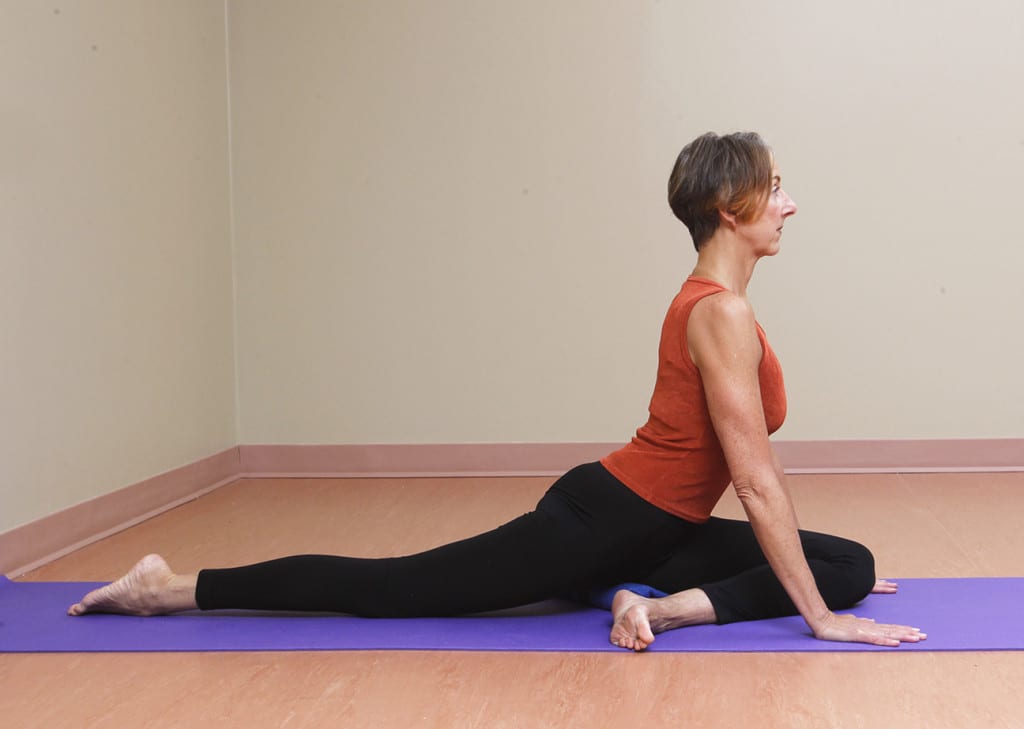Sciatica, loosely defined by the general public as pain in the lower back hip and localized on one side, most commonly occurs when a herniated disk or a bone spur on the spine compresses the sciatic nerve. This causes inflammation, pain and often some numbness in the affected leg. Many people think they have sciatica when in actuality they are experiencing sacroiliac (SI) joint derangement.
The SI joints are depressions on the sides of the sacrum where the back hip bones sit and are held in place by ligaments. Misalignment or derangement of this joint occurs when the hip bone moves out of its “sit” with the sacrum. Another possibility for sacral-leg pain is Piriformis Syndrome which is caused when the piriformis muscle — a deep muscle in the back body connecting the thigh bone to the sacrum — is tight, inflamed or scarred and presses down upon the sciatic nerve.
Injury to the hip or sacrum, too much sitting and repetitive strain to the joint can all trigger the symptoms of sciatica.
Yoga is a known, drug-free practice for relieving sciatica, piriformis syndrome and SI joint derangement. The most common complaints emerge from childbirth injuries to the pelvis, a broken hip from falling, too tight outer hips or too loose ligaments connecting the hips to the sacrum, as well as muscle overuse in right- or left-dominated movements. Therefore, strengthening the adjoining ligaments and developing flexibility in the piriformis muscle provide freedom from extreme pain, ingestion of muscle relaxants and surgery.
If your job duties require you to sit for hours at a time, your body will stiffen and weaken. On the other hand, many sports require asymmetrical action and overdevelop muscles on one side of the buttock and hip (repetitive strain). As an example, the asymmetrical rotation of your golf swing is a known culprit for unbalancing or deranging the pelvis.
The following yoga asanas (poses) practised three to five times per week maintain strength and flexibility, prevent the development of all three ailments as well as encourage healing and balance for sufferers.
Action: Broaden the buttock skin and flesh from the sacrum’s centre to the outer hips. For more advanced practitioners, maintain the above action while drawing the front hip bones towards each other.

EKA PADA RAJAKAPOTASANA (One-Legged King Pigeon Pose)
Start on your hands and knees. Bring your left knee forward between your hands and your left foot under your right hip. Place support under your left sit bone to level your pelvis. Find the action in both the left and right buttocks and front hip bones.

GOMUKHASANA (Cow Face Pose) seated on a block
Start on your hands and knees. Cross your left leg in front of the right leg, and move your left foot outside the right hip. Move your right foot outside your left hip. Place support under your sit bones.

PARIVRTTA TRIKONASANA (Revolved Triangle) with chair
Place your right heel at the wall with the toes turned out slightly. Step your left foot forward. Bring your right hip forward in line with the left. Firm the legs and find the action in the buttocks and front hips. Bend forward and twist to the left placing your right hand on the chair.
For more information, refer to Creating Space — Yoga Actions for Pelvis & Psoas.




